Compact Tractor vs Subcompact Tractor: Everything You Should Know (2024 Comparison)
While compact tractors and subcompact tractors have their differences alongside pros and cons, they are both helpful for pulling or pushing agricultural machinery or trailers. If you’re looking to plow, till, disk, plant, or perform similar tasks, you’ll probably be curious to know the difference between these two categories of tractors, and that’s what this article is about.
Compact tractors are large-framed tractors designed for use in rugged terrains and wooded areas. They are commonly used for mowing, snow clearing, landscaping, and animal management.
On the other hand, subcompact tractors have smaller body frames that make them very versatile. Their small frame and low ground clearance make them excellent for lawn and garden tractors.
Compact tractors and subcompact tractors are the most popular categories of tractors. When you hit the market to purchase a tractor, you’ll come across both. But it takes an in-depth understanding of their differences and how each works to know which suits your needs.
This article will review their main characteristics, pros, and cons. Hopefully, you can use the information here to make an informed decision when you hit the market.
Compact Tractors Overview
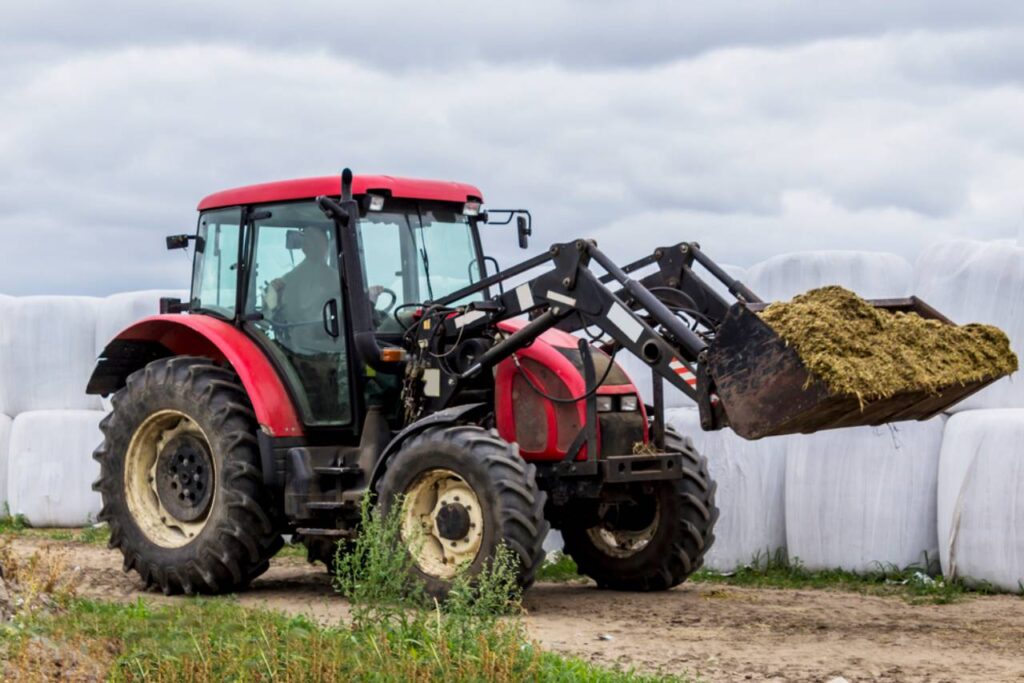
Compact tractors are, in fact, multi-purpose, and they carry a design that allows them to perform several different tasks.
However, as their name signifies, they are relatively smaller and designed to work on small farms. But that doesn’t take anything away from its versatility. In fact, versatility is one of its most significant advantages.
Compact tractors are designed mostly for homeowners and hobby farmers; hence, their relatively small acreage. They come with 540 rpm PTO and a three-point hitch, designed to work with category one implements.
In addition to being compact, compact tractors also typically weigh less (usually below 2000 kgs). Their PTO HP is also usually less than 40. Their design also makes them best for use with mowers and other light-duty material-handling equipment.
Their rear PTA usually rotates at 540 RPM. However, they mostly have a second PTO at the center or front of the tractor. Despite their size, they still work with an impressive range of farm implements.
Compact tractors are also typically strong, durable, and reliable. However, a major factor to consider before choosing a compact tractor is whether it suits what you want to use it for.
What Do You Need a Compact Tractor For?
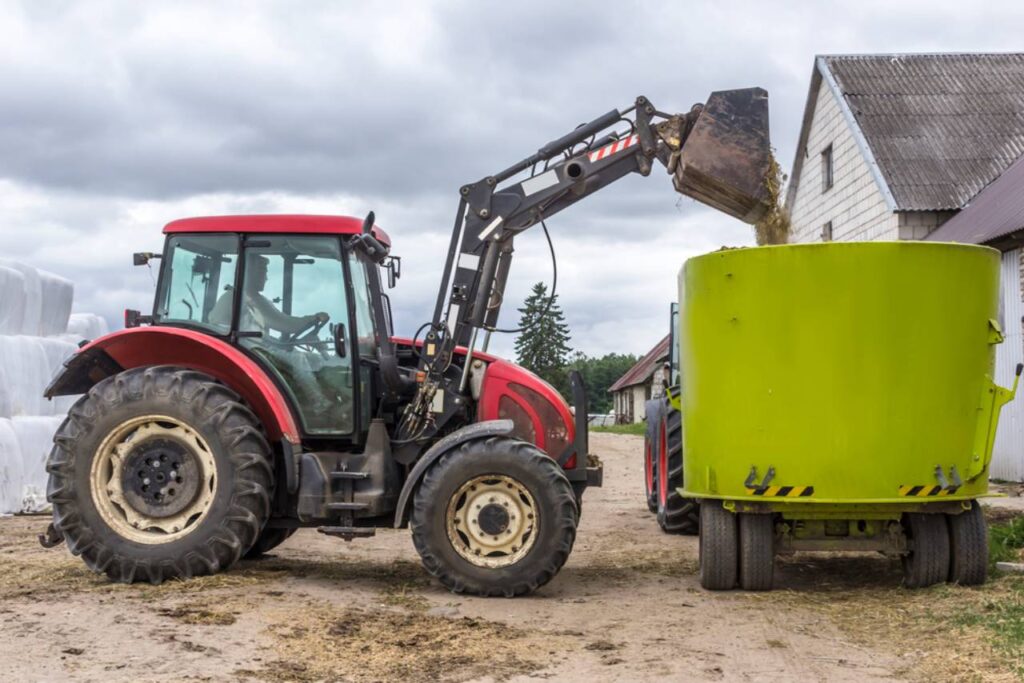
Perhaps, the most popular answer to this question is “for farm works that need significant maneuverability. But there’s more to it. You’d want to consider other features like horsepower, affordability, and agricultural needs.
An excellent way to get what’s suitable for you is to start by making a list of the tasks you’d want to complete. You want to ensure that a compact tractor offers enough horsepower to meet your needs.
On the other hand, you don’t need to pay extra fees for the strength you’ll not consume. So, if smaller farm implements can handle the work you want to complete, then go for them. You should also consider future needs.
For example, while you may need a simple mower now, you may need to till or dig the ground later, in which case you’ll need a tractor to serve.
Types of Compact Tractors
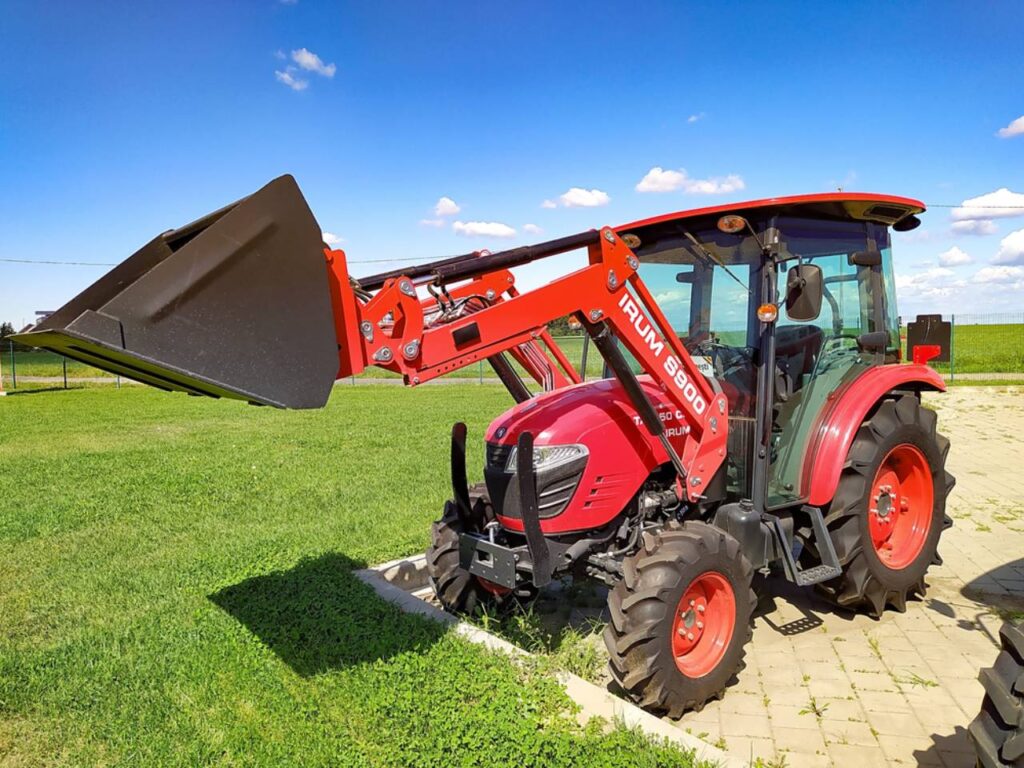
There are two main types of compact tractors, each with unique characteristics that stand out. Here’s a brief review of both types.
1. Manual Tractors
As the name implies, this type of tractor features mainly manual operations. It’s the ideal option to turn to if your work involves ground preparation or land cultivation.
Their manual control means they are easily controllable, even in confined spaces. The ease of changing control speed makes this tractor a preferred option for carrying out all groundwork.
2. Hydro Tractor
As the name implies, this type of compact tractor relies heavily on hydraulics for smooth operations. Their easy forward and backward movements make them an excellent choice for intense mowing and loader functions.
They typically come with pedal operating systems allowing easy speed switching via a clutch and shift. Operation hours can also vary depending on horsepower. However, rest assured that they’ll hardly overheat.
Uses of Compact Tractor

Some of the most popular uses of compact tractors include:
Haulage
Compact tractors that fit into the horsepower ranges of 15hp to 40hp are ideal for hauling. Agriculturists can use these tractors to complete small-scale hauling tasks without needing trucks or other vehicles.
In addition to carrying other implements, compact tractors in this category can also be used to transport farm produce to and from storehouses.
Realty and Construction
These days, tractors have evolved in design and power. Compact tractors are now designed to work outside farmlands. Don’t be surprised to see compact tractors used for construction, road dirt removal, or snow removal.
You just need to fix the suitable implements for the tractor to achieve this. If you own a rear-mounted blade, you can use it with a compact tractor to grade, spread, or level gravel on a driveway.
Despite their relatively small size, compact tractors still handle most of these activities with finesse.
Mining
There are hardly any limits to what you can achieve with a compact tractor as long as you have the correct implements.
Mining is another task you can use compact tractors for. You can use your compact tractor for small mining operations like excavations, gravel haulage, etc. However, ensure that you’re skilled in these operations before trying them.
Landscaping
Like most other types of tractors, compact tractors work well for landscaping. In fact, they are ideal for both residential and commercial landscape gardening. The compact tractors’ size means they can fit into most spaces.
Thus, it’s easy to use them for any kind of landscaping operation. You just need to have the correct type of implements to use these tractors for landscaping operations efficiently.
Lawn care
Gardeners are going to enjoy compact tractors for taking care of lawns. Overgrown lawns are a common problem in most gardens, and agriculturists always look for easy methods to take off lawns.
Fortunately, compact tractors have all the right characteristics to take out lawns when necessary. Beyond mowing, these tractors can also be used to fertilize lawns and kill weeds where necessary.
How Much Does a Compact Tractor Cost?

Depending on size, a new compact tractor costs anywhere between $9000 to $12000, or more for larger ones.
However, if you’re buying on a budget or want to save money, it is wise to compare new tractor prices with used versions.
You’ll usually find several of these pre-owned models in the market at relatively affordable prices.
However, irrespective of your choice, always set aside certain amounts for attachments, especially if you want your tractor to reach its full potential.
How Much Does a Compact Tractor Weigh?
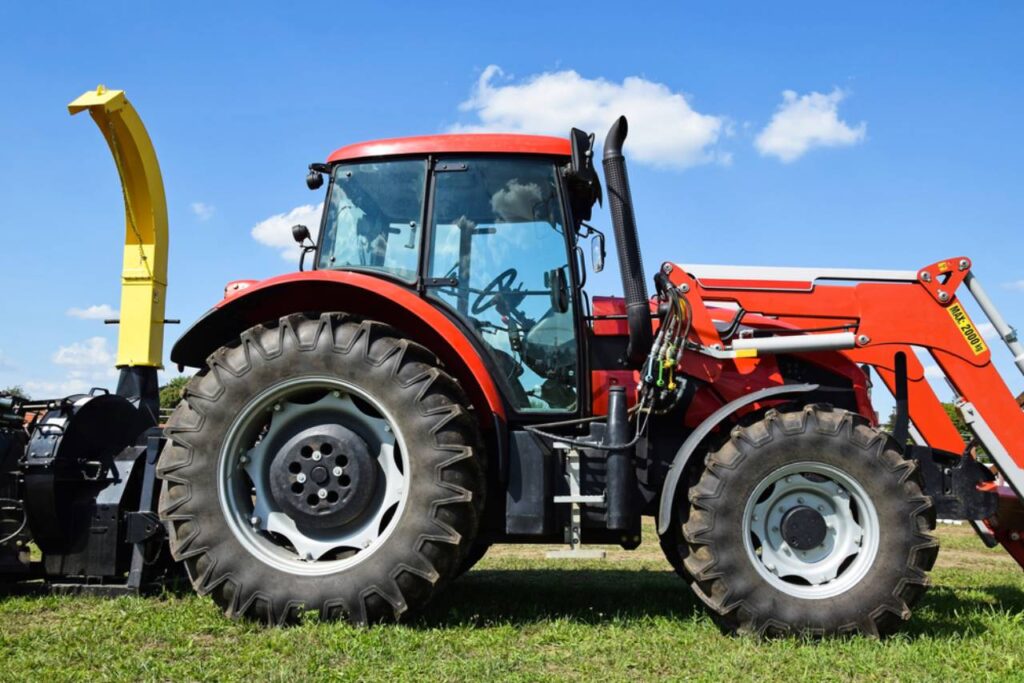
As expected, compact tractors come in various sizes, and most times, these sizes depend on the manufacturer.
Full-sized compact tractors have a power output of between 40 and 60 horsepower, and they weigh about 4,000 lb. At this weight and power, they can lift over 2000 lb of load.
Additionally, they can easily carry hay equipment and implements weighing 6-7″.
Pros of Compact Tractors

Most agriculturists know that compact tractors are great for different purposes.
However, if you’re still wondering whether to buy a compact tractor or not, here are some important advantages of compact tractors you should know.
Weight & frame
Perhaps, one of the biggest advantages of compact tractors over their subcompact counterparts is weight.
Compact tractors are, by default, designed to weigh more than sub-compact tractors. They also typically have better frame structure, allowing them to handle more work.
Additionally, their design means they have higher ground clearance, which can make them slightly more efficient on rough terrains than subcompact tractors.
Performance
Let’s face the fact; most people opt for compact tractors when they want an option that performs very well.
Compact tractors are designed with a higher power, so you can expect more output than subcompact tractors. The availability of bigger buckets also means more functionality for you.
Besides, you’d be able to attach several other implements, which can mean more output.
Ease of operation
Compact tractors feature an incredible level of operational ease. Their controls are typically designed for efficiency and comfort. Add that to the availability of plenty of leg and foot room, and you can tell it’ll be easy to use.
Surprisingly, they also offer maximum comfort when working in rough terrains. The flexibility of their cabs/driver station means that you can adjust everything inside to your preference.
It’s not surprising that amateurs typically prefer this option.
Easy to maintain
Let’s also mention that compact tractors last long because of their ease of maintenance. They’ve been designed to serve a broader target market.
So as expected, maintenance is generally easy, with simple access to engine compartments. They also feature practical and straightforward maintenance points around them.
Increased efficiency and productivity
Starting your agricultural journey from scratch is okay. However, at some point, you’ll seek expansion. At such points, farm maintenance may become tiring.
In comes compact tractors to turn your life around. Compact tractors can make farm work a breeze because that’s what they’re designed for.
Besides, you’ll be comfortable in them and no longer need to face the harsh sun head-on.
Cons of Compact Tractors
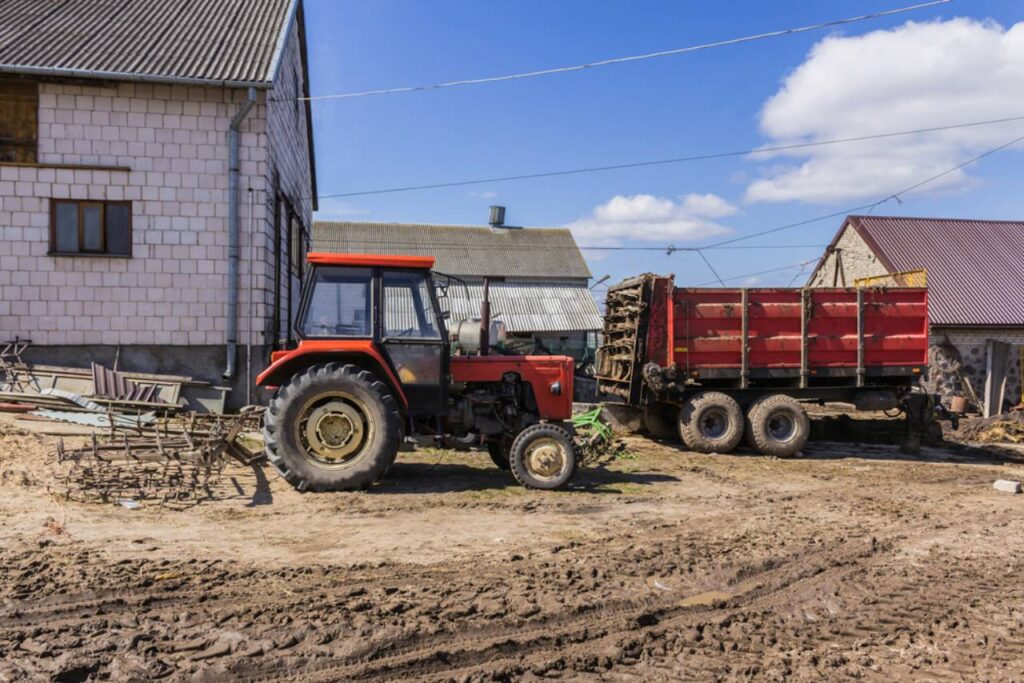
Just like every other thing, compact tractors have their disadvantages. So before hitting the market for one, it’s important to know their disadvantages and decide whether you can cope with them. Let’s go!
Fuel consumption
One of the most significant disadvantages of using compact tractors is the amount of fuel it consumes. Despite their relatively compact size and looks, they typically consume more fuel than subcompact tractors or other bigger types of tractors.
This means constantly refueling your machine if you want it to continue running efficiently. Depending on your location, fuel can be averagely priced to quite expensive, adding significantly to your cost of farming.
Maneuverability difficulty
We know we talked about the ease of maneuvering for compact tractors. But some modern options can still be quite difficult to maneuver in tight spaces.
Add that to the numerous implements you’ll attach to the machine, and you can tell how difficult it can get.
Pollution
Another significant disadvantage of compact tractors is their ability to cause air pollution. Air pollution means the presence of one or more chemical, physical, or biological substances in the atmosphere.
We’ll know how dangerous air pollution can be to our ecosystem. So, it’s not surprising that experts often advise thinking about this before making your purchase decision.
Subcompact Tractors Overview
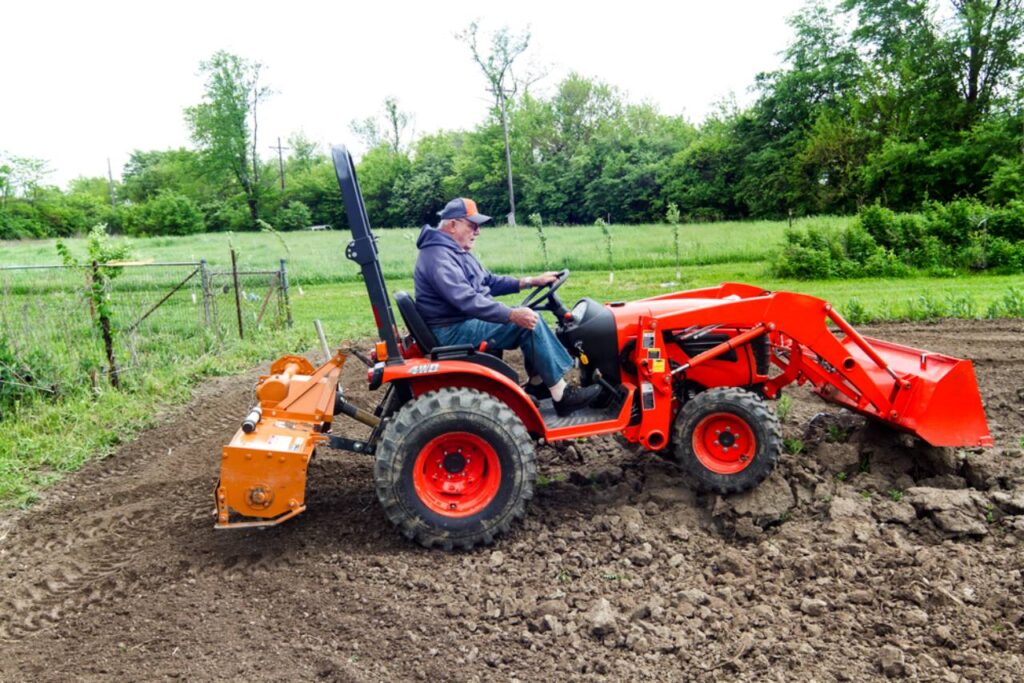
Although they are designed with a smaller frame and less ground clearance to accommodate a mowing deck, subcompact tractors have many similar features as compact tractors.
This means that subcompact tractors offer many of the same benefits as compact tractors, although they typically cost less and do not take up as much space.
With a four-wheel drive, diesel engine, and power steering, subcompact tractors feature all the versatility of bigger tractors, despite their relatively smaller frame.
Subcompact tractors are designed mostly for homeowners and hobby farmers. Thus, their relatively smaller acreage. They typically come with less than 25 hp, although they can still work with most category one implements.
Its use cases are encompassing, although it’ll mostly be combined with mowers and other light-duty material-handling equipment.
Subcompact tractors are equipped with features to make the operator’s experience very comfortable. Therefore, it’s not surprising that it comes with smooth steering, adjustable seats, fully padded interiors, and plenty of foot space.
Subcompact tractors are ideal for people maintaining lighter-duty landscapes. With so many brands manufacturing this type of tractor today, you’ll find them equipped with ultramodern features, which ensures optimum performance at all times.
Subcompact tractors have a reputation for being strong and durable, although experts still recommend buying based on what suits your needs.
Uses of Subcompact Tractors

Some of the most popular uses of Subcompact tractors include:
Gardening
This is easily the most popular use of a subcompact tractor. Tasks like seedbed prep and weed control are effectively completed with this tractor.
You just need to mount your hydraulic tiller attachment to the back of the tractor to handle your gardening tasks as quickly and effectively as you want.
Other gardening attachments include blades, cultivators, and scrapers. These attachments offer you plenty of options to maintain everything, irrespective of the size of your garden.
Mowing
Another popular use of subcompact tractors is mowing, which is arguably the most common yard work task.
These tractors allow for the attachment of mower implements, which can quickly turn the tractor into a finish mower to handle the clean, close cutting of garden lawns.
Landscaping
Many people are yet to realize that subcompact tractors can handle different kinds of landscaping projects. You’ll find loader attachments in most equipment stores.
These loader attachments can be used for earth movement or the transportation of heavy landscape materials. It’s not surprising that most subcompact tractors and even compact tractors come with a loader as part of the final package.
The dozens of landscape attachments available for subcompact tractors can easily turn the already versatile machine into a multipurpose landscaping tool.
Lifting and moving things
The front loader ranks high as one of the most common implements sold for subcompact tractors. Front loaders are excellent for handling several garden jobs.
The front loader can leverage the tractor’s hydraulic system to pick, lift, spread, and move all kinds of material around the garden.
Fortunately, most modern tractors come with pre-mounted front loaders, so you won’t need to start buying and installing another.
Guess what? Subcompact tractors can also be very useful for clearing snow in winter. You just need to properly hook up a snow bucket on the tractor to begin clearing.
Animal management
Do you know you can do most of the necessary work to care for animals with a subcompact tractor?
Apart from owning vast lands, rural farmers typically also practice animal farming. Let’s go back to the loader we talked about above. This piece of agricultural implements also works for handling several animal management tasks.
Fortunately, subcompact tractors are large enough to handle these attachments and powerful enough to take on the tasks.
Their relatively compact size also means you can maneuver them through stalls, fates, and pens while taking animal needs around the farm.
How Much Does a Subcompact Tractor Cost?

Depending on size, a new subcompact tractor costs between $3,500 and $30,000. Fairly used options can cost between $1,000 to $20,000.
When buying on a budget, it’s wise to compare the prices of new tractors with used tractors to determine which works best for you.
Again, don’t forget to check the total horsepower, manufacturer, and age. These factors can also significantly drive the cost high or low.
How Much Does a Subcompact Tractor Weigh?
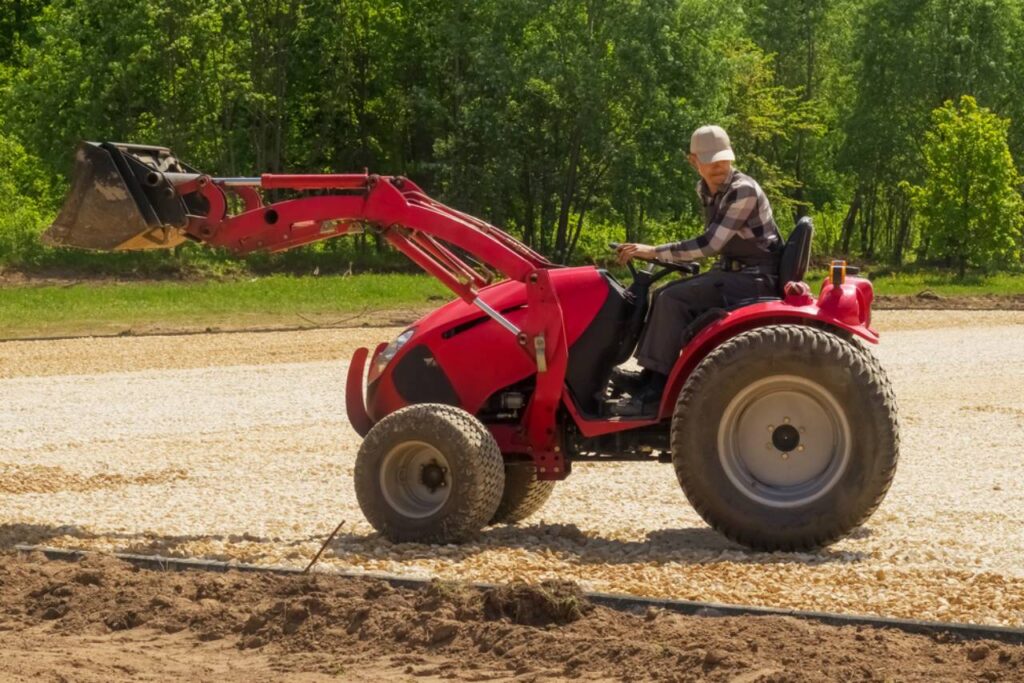
Subcompact tractors are the most popular size tractors used in the United States. These tractors are usually 4wd, delivering 29-25 horsepower of energy and weighing between 1,400 and 1,600 lbs.
Most subcompact tractors are powerful enough to operate most 4″ implements. Their loader lift capacity is also usually less than 1000 lb.
Pros of Subcompact Tractors
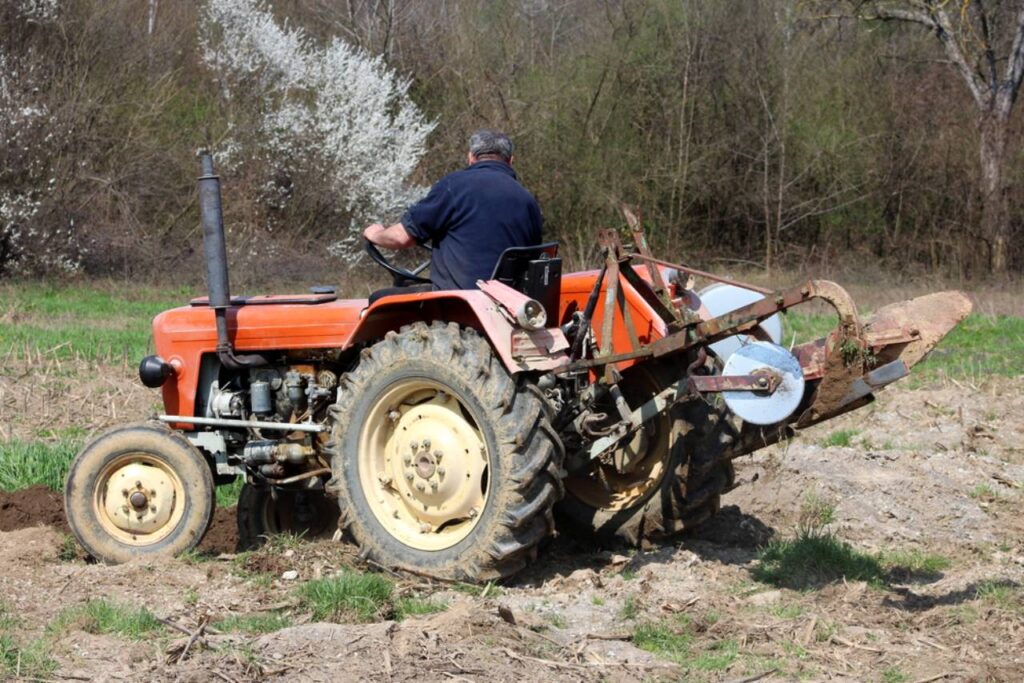
Like compact tractors, subcompact tractors are useful for several purposes. Farmers, gardeners, and homeowners would always find a need for this kind of tractor. Before going to the market for it, here are some of the important benefits of a subcompact tractor.
Flexibility
While subcompact tractors generally have less than 40 horsepower, they offer the same level of flexibility as compact tractors (sometimes more). They are also compatible with most full-size attachments. Thus, you can handle most jobs with it, from lawn mowing to tackling small excavation projects and landscaping
Affordability
Let’s face the fact; one of the reasons why subcompact tractors are popular among homeowners and non-commercial agriculturists is their affordability. Subcompact tractors are usually more affordable than full-size options, but they’re still able to bring the flexibility and versatility you’d want to your projects. The cost-effectiveness of this kind of tractor is bolstered further by their ease of usage and limited fuel consumption.
Storage ease
Subcompact tractors are relatively small, so it’s not surprising that they are generally easier to store when not in use. Some models are as small as big-sized riding lawn mowers, so you won’t need to worry about storage space when packing the equipment for future usage.
Operator comfort
Like compact tractors, subcompact tractors focus on the operator’s comfort. So it’s not surprising to see the inclusion of features like smooth steering, foot room, adjustable seat, padded interiors, etc. All these combine to give users a comfortable experience.
Performance
Despite their relatively small size, most compact tractors are still equipped with top-notch features to ensure the best performance possible. Additionally, we’ve found that most of these tractors have strong and durable hoods that allow them s take on the most challenging jobs without breaking down.
Cons of Subcompact Tractors
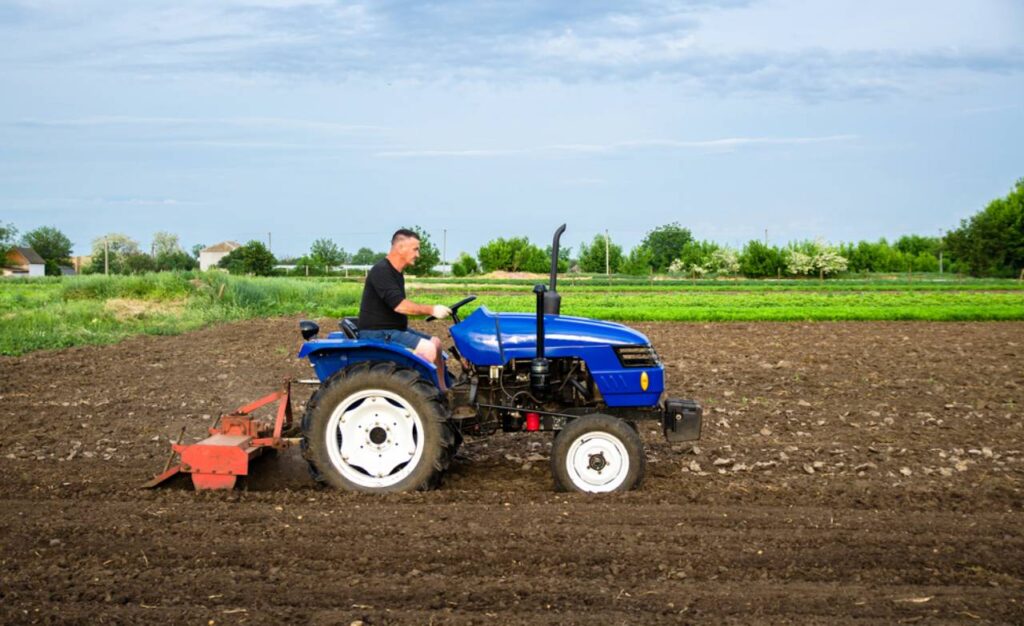
Again, there are a few disadvantages to expect in this tractor. Although most of these disadvantages seem pretty insignificant, they are worth knowing before you make the decision to buy a subcompact tractor.
Low usage expectations
One of the biggest let down of subcompact tractors is that it’s limited in many things. So before buying it, you’ll already zero your mind on some tasks. While subcompact tractors can still move large loads, they are usually not the best fit for such kinds of jobs and, as such, won’t do them as well as other bigger tractors.
Ground clearance
While it’s obvious that subcompact tractors are designed for rugged terrains, they still can’t work well in some areas. Of course, their proximity to the ground makes them great for sloped properties, but they are still not practical for heavily wooded areas.
Which One Should You Choose?
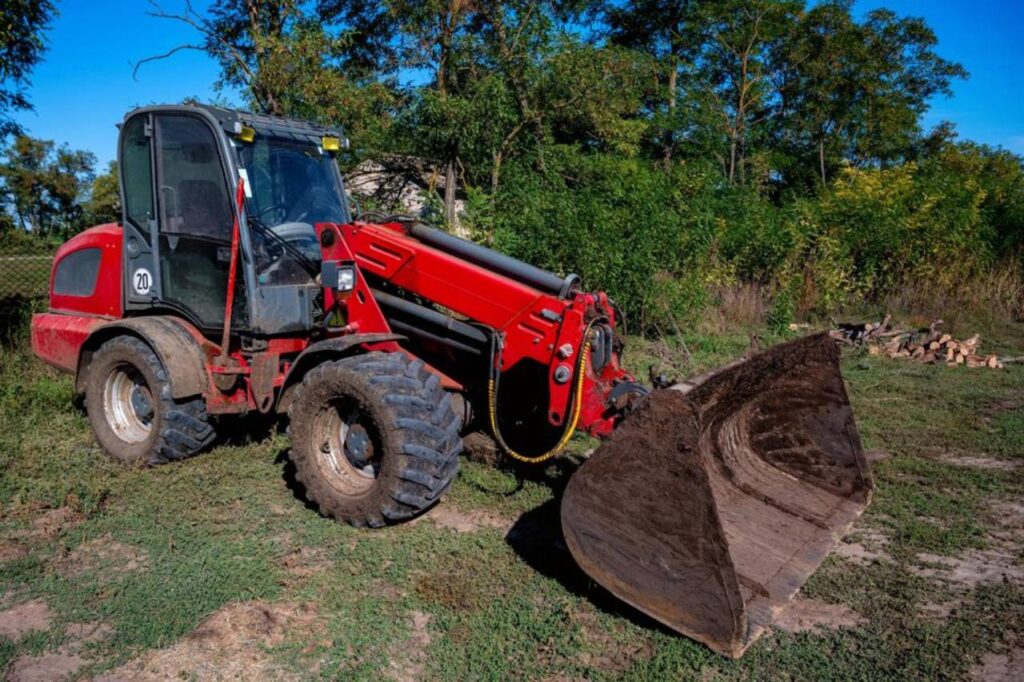
Compact tractors and subcompact tractors are both agricultural machinery designed to make gardening and other farm work easier. Each of them features unique advantages and disadvantages.
However, the biggest concern when using both is mostly performance.
Compact tractors are typically more powerful than subcompact tractors, and that’s why they produce more performance. They are also generally very versatile because of their ability to carry different agricultural implements.
But their size is often a letdown compared to subcompact tractors.
On the other hand, subcompact tractors can still produce an impressive level of performance. They are also generally versatile, but their biggest advantage is size.
They are typically smaller and can be used on narrow roads where compact tractors may not work. Subcompact tractors are also cheaper than compact tractors, so if the price is something you’re interested in, you can always opt for a subcompact tractor.
However, if you prefer higher performance, choose a compact tractor.
Conclusion: Compact Tractor vs Subcompact Tractor
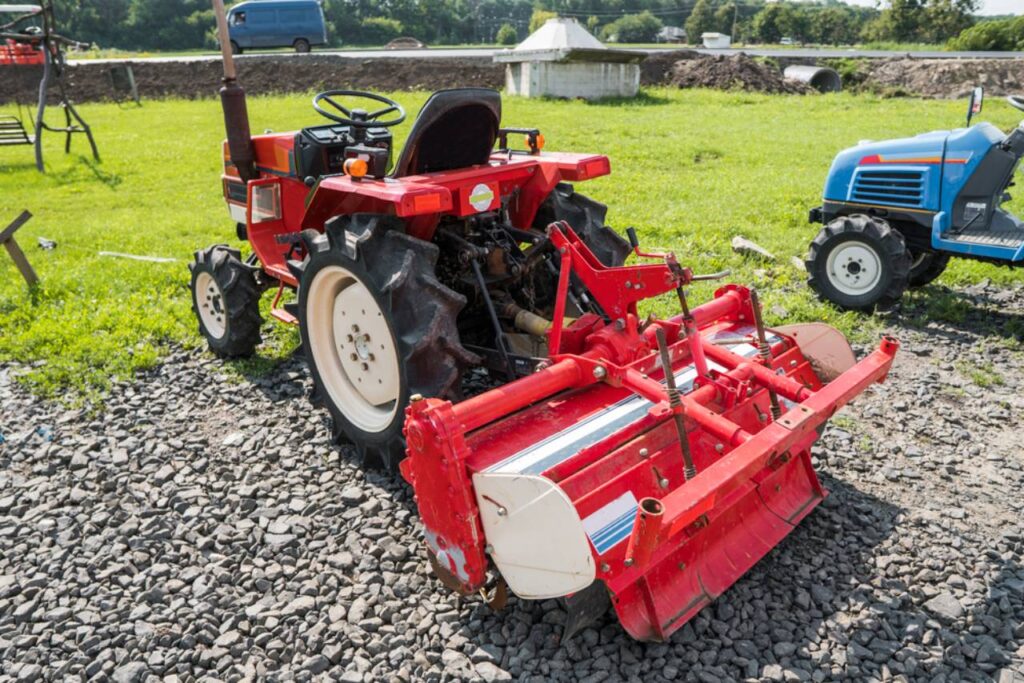
That’s a wrap: a detailed look at everything you should know about a compact tractor and a subcompact tractor. Both tractors are similar to each other in functionality and working mechanism.
However, compact tractors have the edge over subcompact tractors in power, capacity, and output. On the other hand, subcompact tractors are more compact, flexible, cheaper, and easier to use.
FAQ
What is the difference between a compact and a subcompact tractor?
The main difference between a compact and a subcompact tractor lies in their size and power. Subcompact tractors are smaller and less powerful, typically with engine horsepower ratings ranging from 15 to 30 horsepower. They are designed for lighter-duty tasks and are more maneuverable in tight spaces. Compact tractors, on the other hand, are larger and more powerful, with horsepower ratings typically starting at 20 and going up to 100 or more. They are suitable for a wider range of tasks, including heavier-duty work.
Do I really need a sub-compact tractor?
The need for a subcompact tractor depends on your specific requirements. Subcompact tractors are ideal for homeowners, small-scale farmers, and hobbyists who need a versatile machine for tasks like mowing, tilling, snow removal, and light hauling on a small property. If you have limited space or primarily engage in light-duty tasks, a subcompact tractor may be a cost-effective and practical choice.
What are sub-compact tractors good for?
Sub-compact tractors excel at tasks like lawn maintenance, landscaping, gardening, and small-scale farming. They are also suitable for small construction projects, snow removal, and general property maintenance. Their compact size and maneuverability make them a great choice for working in confined areas or around obstacles.
How do I choose a sub-compact tractor?
When choosing a subcompact tractor, consider factors such as the size of your property, the types of tasks you need to perform, and your budget. Determine the necessary horsepower and attachments for your specific applications. Additionally, evaluate the manufacturer’s reputation, dealer support, and warranty options. It’s essential to match the tractor’s capabilities to your intended use to make an informed decision.

